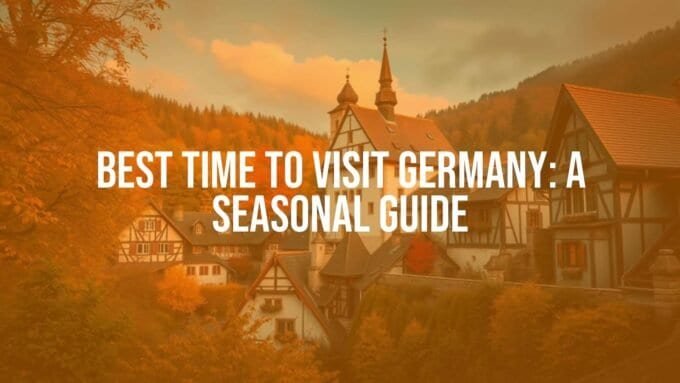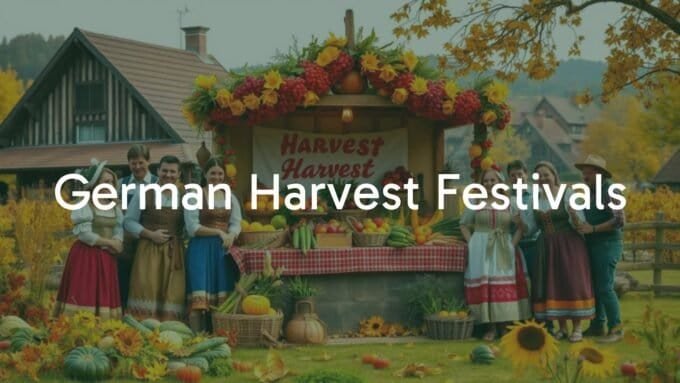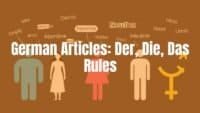German folklore stories have grown out of centuries of spoken tradition, local influences, and important changes in history. These tales include magical fairy tales, scary legends, and epic myths, showing different sides of German culture. While many people think of them as stories for children, they are actually complex and often reflect the hopes, fears, and beliefs of those who shared them. Although the stories have changed in many ways over time, their main ideas have stayed the same.

What makes up German folklore stories?
German folklore covers many different kinds of stories from several German-speaking areas and time periods. Rather than coming from one single group, these tales have grown from many regions, shaped by local history and culture. They have things in common with stories from Nordic and English traditions due to shared roots in Germanic myths, but German folklore also has its own unique features as a result of the country’s variety.
Main features and repeating ideas in German folklore
- Focus on nature: Many stories are set in dense, mysterious forests, which are both exciting and dangerous places.
- Common people as heroes: Often, main characters are regular people like farmers or woodcutters who go on adventures and become heroes.
- Magic and transformation: Royal characters are sometimes under magical spells, showing change and fate in life.
- Rewards and punishment: Goodness and kindness usually bring rewards, while mean or selfish actions are punished.
- Magical creatures and helpers: These stories are full of fantastic beings such as Rumpelstiltskin, elves, dragons, and talking animals. Magical objects or helper figures often give heroes the tools they need to win.
- Cleverness: Heroes often win by thinking quickly or using their minds, not just through strength.

The role of spoken tradition and local culture
German folklore was passed down by word of mouth for hundreds, even thousands, of years. Storytellers would share these tales with their communities, adapting them to fit their local customs and referring to actual places. This led to many different versions of the same story, each with its own style and details. Because Germany was split into many smaller states for much of its history, these stories became especially diverse. German folklore also includes stories from Austria, Liechtenstein, and German-speaking parts of Switzerland, Luxembourg, Belgium, and Italy, adding even more variety.
How did German folklore stories change over time?
German folklore stories have changed a lot-from being told out loud to being written down in books. This change happened because of new social rules, better ways to share information, and the work of people who wanted to save and share these tales.
Early history and sources
- Old myths: The oldest German stories came from Germanic myths, which also connect to Scandinavian and English ones. These had gods, spirits, and supernatural events that shaped later tales.
- Oral storytelling: Before most people could read and write, stories were told at home and in group settings. This allowed each region to add its own twist, creating many versions.
- Early documentation: The first written collections, like the ones by Johann Karl August Musäus in the 1700s, helped save these stories in a permanent way.
The Brothers Grimm and other collectors
The 1800s were a key time for German folklore. Jacob and Wilhelm Grimm collected and wrote down many stories that had only been spoken before. They believed these stories were important for German identity. Their first book, “Children’s and Household Tales” (Kinder- und Hausmärchen), came out in 1812 and included many stories that are well known today. The Grimms made the tales simpler and less violent in later editions so they would be suitable for kids, but the originals were often much darker. Their efforts helped make German fairy tales famous around the world and a big part of children’s books everywhere.

What are some of the most well-known German folklore stories?
Many German folklore stories have become famous worldwide, thanks in large part to the collection work of the Brothers Grimm. Some of the best known stories include:
| Story Name | Summary | Main Lessons |
|---|---|---|
| Hansel and Gretel | A brother and sister, lost in the woods, outsmart a witch who plans to eat them, escape with treasures, and return home. | Cleverness, survival, hope in tough times. |
| Rumpelstiltskin | A girl must guess a magical creature’s name to save her child after making a risky promise. | Be careful with promises; cleverness overcomes danger. |
| Snow White | A jealous queen tries to kill her stepdaughter, who is saved by dwarfs and a prince, while the queen is punished for her cruelty. | Good wins over evil; jealousy and vanity cause suffering. |
| The Pied Piper of Hamelin | A piper removes rats from a town but, after not being paid, leads away all the children. | The cost of breaking promises; actions have consequences. |
| Lorelei | A water nymph’s song lures sailors to their deaths at a dangerous part of the Rhine River. | Beware of temptation and nature’s dangers. |
| The Nutcracker and the Mouse King | A girl helps her nutcracker toy fight an evil mouse, breaking a curse and showing true love’s value. | Bravery, love, and inner beauty matter most. |

What special creatures and characters are part of German folklore?
German folklore is full of unique and interesting creatures. Many stories use these beings to explain natural events or warn people about dangers.
- Dwarves and elves: Usually shown as small, often odd-looking, they live underground and are often linked to hidden treasures. Dwarves sometimes exchange human babies for their own (changelings).
- Nixies and water spirits: Female spirits living in rivers and lakes, like the Rhine. Some are helpful; others, like Lorelei, are dangerous. They are said to draw unlucky listeners to their deaths.
- Forest beings: Friendly wood spirits like Moss people help out, but some, like Fänggen, are believed to be harmful and even eat people. Other forest guardians watch over mines or cause nightmares.
- Monsters and shape-shifters: Legends include characters such as Rübezahl, a giant, and the Morbach Monster, a werewolf from a soldier’s curse.

What ideas and lessons are found in German folklore stories?
These stories are not just for entertainment-they often have clear lessons and show the difference between good and bad behavior.
- Justice and payback: Wrongdoers almost always face punishment. Good characters usually win by clever thinking, showing that brains are as important as strength.
- Courage and persistence: Main characters often face tough and scary challenges. They might be forced out of safety, outsmart villains, or keep trying until they succeed. People are rewarded for being brave and never giving up.
- Warnings and darker aspects: Early versions of these stories are much more violent and scary than modern retellings. They include child abandonment, hunger, and violent revenge. These details served as warnings, teaching children and adults about real dangers and right from wrong.
What do people often get wrong about German folklore stories?
Many misunderstand German folklore, especially since recent versions often leave out the harsher parts. Some common misunderstandings include:
- Fairy tales vs. legends and myths: Not all stories are fairy tales. Myths usually tell about gods and creation, legends are often tied to real places and events (like the Pied Piper), and fairy tales focus on happy endings, using magic and non-religious themes.
- Violence and darkness: Early versions of many stories, like those the Brothers Grimm collected, are quite violent and not really meant for little children. Details such as punishment, anger, and hard choices were key parts of the original stories, intended to teach lessons about the real world rather than just entertain.
How do German folklore stories affect today’s culture?
German folklore stories still have a big impact. Their main messages and well-known characters continue to inspire books, movies, art, and even travel.
Modern books, movies, and more
- A lot of new stories, films, and shows are based on these old tales-sometimes highlighting their darker sides, sometimes making them suitable for families and children.
- Famous works include new versions of “The Nutcracker” as a ballet, and many creative takes on Grimm tales, both in fantasy stories and in art.
Festivals, art, and tourism
- Towns like Hamelin host events about their local legends (e.g., the Pied Piper).
- The Black Forest is a popular tourist spot because of its links to German stories and myths.
- Museums and art displays highlight these tales, keeping them alive for present-day visitors. Even famous operas, like Wagner’s “The Ring of the Nibelung,” borrow from these legends.
Overall, German folklore is still an important part of culture, both in Germany and around the world, bringing together the past and present through stories that are both magical and meaningful.













Leave a comment